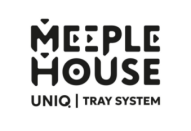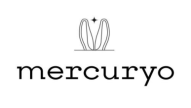Total fee
from 890 EUR
Additional class
from 200 EUR
Trademark Registration in the UK
Registering a trademark in England is done by filing a formal application with the UK Intellectual Property Office - UKIPO. This application confirms your intention to obtain an exclusive right to use your brand in the UK. It is important to indicate the categories of goods and services according to the international classifier.
If the UKIPO approves your application, you will receive an officially registered and protected trademark for a period of 10 years. The entire process takes an average of 4 months, if there are no objections from third parties. If such objections arise, the process can take up to a year. The right to TM must be renewed every 10 years. For proper execution of documents and to avoid problems, we recommend using the services of professionals.
Table of contents
Who needs a trade mark (TM) in the UK?
Registering a trade mark in the UK is important for any business that plans to operate in the UK market or is already operating there. First of all, it is necessary:
- For companies selling goods or services in the UK – protecting your brand from being copied by competitors.
- Online stores (Amazon, eBay, Etsy, etc.) – preventing blocking due to trademark claims.
- For startups and entrepreneurs – even at the project launch stage, TM registration helps to avoid problems in the future.
- For manufacturers and distributors – protection of names, logos and slogans.
- Franchise owners have the right to transfer the brand to partners on a legal basis.
Why do you need a trade mark (TM) in the UK?
- Exclusive rights - only you will have the right to use this mark for commercial purposes.
- Protection from illegal copying – the ability to sue violators and demand compensation.
- Increased customer confidence – a registered TM confirms the legality of the business.
- Expandability – the brand becomes an asset that can be sold or licensed.
- Customs protection is the right to demand the seizure of counterfeit goods at the border.
Without registration, your brand is vulnerable - competitors can register a similar mark and deprive you of the right to use it.
TM Registration Procedure in the UK
-
Expert search by TMPreliminary check for trademark uniqueness
-
TM applicationSelecting classes, filling out the application, and submitting it to the agency
-
ExpertiseOnce you have submitted your application for registration, it will be reviewed by an examiner of the UKIPO. When the review is complete, you will be sent a report informing you whether your trademark has been approved for registration. This process usually takes about two months from the date of receipt of your application. If the decision is to refuse, the Patent Office will state the reasons why the trademark does not meet the conditions for registration. If you disagree with the decision and are prepared to submit a reasoned protest, the decision may be reviewed. Otherwise, the application will be terminated at this stage.
-
PublicationIf your trademark is not refused registration, it will be published in the Official Gazette, which is published every Friday. After publication, owners of the similar trademarks will have the right to file a formal opposition to your TM within 2 months. Information about your application for registration, including your details (name and address), will be posted on the official website of the UKIPO and available for public inspection.
-
Certificate issuanceAfter the opposition period ends, a certificate is issued. Your TM has been successfully registered!
Deadlines
The trademark registration process usually takes about four months, unless there are any objections, doubts or disputes from third parties. However, if such objections arise and you plan to challenge them, the registration procedure will take longer. If your trademark registration is challenged, you will need to decide whether you want to fight the challenge or withdraw your application. If you decide to fight the challenge, there are several necessary steps you will need to take.
Features of TM registration in the UK
- After Brexit, the UKIPO is no longer linked to the EUIPO, so the mark must be registered separately.
- Classes of goods and services – the Nice classification applies, but only those categories that are actually used can be indicated
- Validity period: 10 years with the possibility of extension.
- Requirements for the sign - it must be unique, not descriptive and not misleading.
Our services for registering a trade mark in the UK
Law&Trust offers full legal support:
- Consultation and conducting analysis of the mark – risk analysis before filing an application.
- UKIPO databases – check for identity and similarity.
- Preparing and submitting an application – correct paperwork.
- UKIPO requests – defences against objections.
- Support in opposition – assistance in disputes with third parties.
- Obtaining a certificate – control at all stages.
F.A.Q.
Is it possible to register in the UK a mark that is already registered in the EU but not used in the UK?
Yes, but with nuances. After Brexit, the UKIPO does not automatically recognize European trademarks. However, if your mark in the EU was registered before 31.12.2020, its "clone right" was created in the UK. For new registrations, you need to submit a separate application to the UKIPO.
What if my trade mark contains a geographical name associated with the UK?
The UKIPO may refuse a trademark if the name clearly indicates the geographical origin of the goods, is likely to mislead consumers or is a well-known place name (eg "Scottish Whisky").
Is it possible to register in the UK a mark that is already in use but not registered by competitors?
Yes, but only if competitors prove fair use of the mark before your application. Either the acquisition of a reputation in the market will be proven, or your bad faith in registration.
Why might UKIPO refuse to register a black and white logo?
Unlike the EUIPO, the UKIPO requires a clear indication whether only the outlines or the colour scheme are protected. If a black and white version is claimed, colour versions may not be protected. So it is better to file separate applications for different colour schemes.
Is it particularly difficult to register a mark for NFTs and virtual goods in the UK?
Problems arise from the uncertainty of classification (classes 9, 35, 41 or 42). There may be difficulties in describing virtual goods. There is also a risk of overlap with existing "physical" marks.




















































